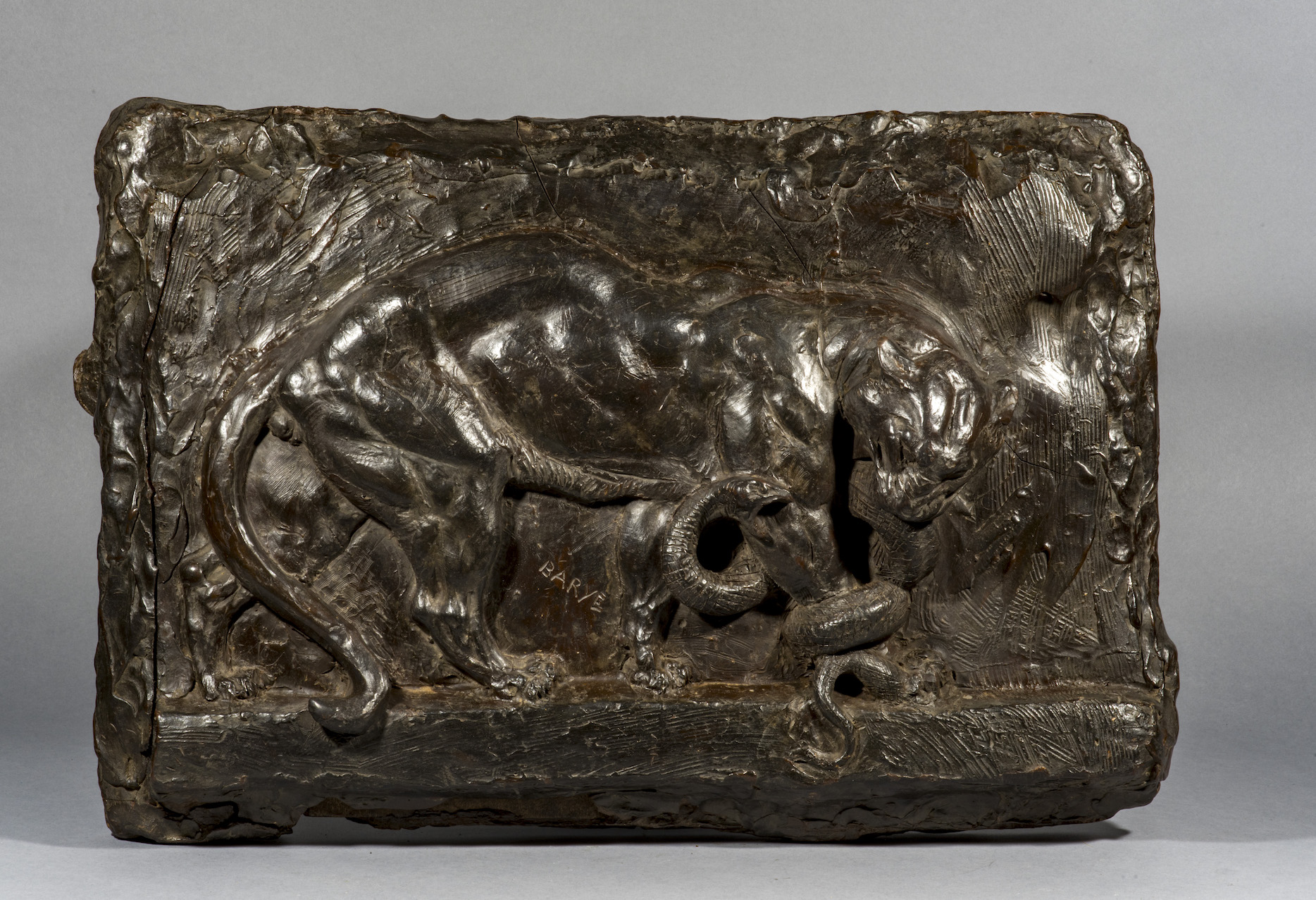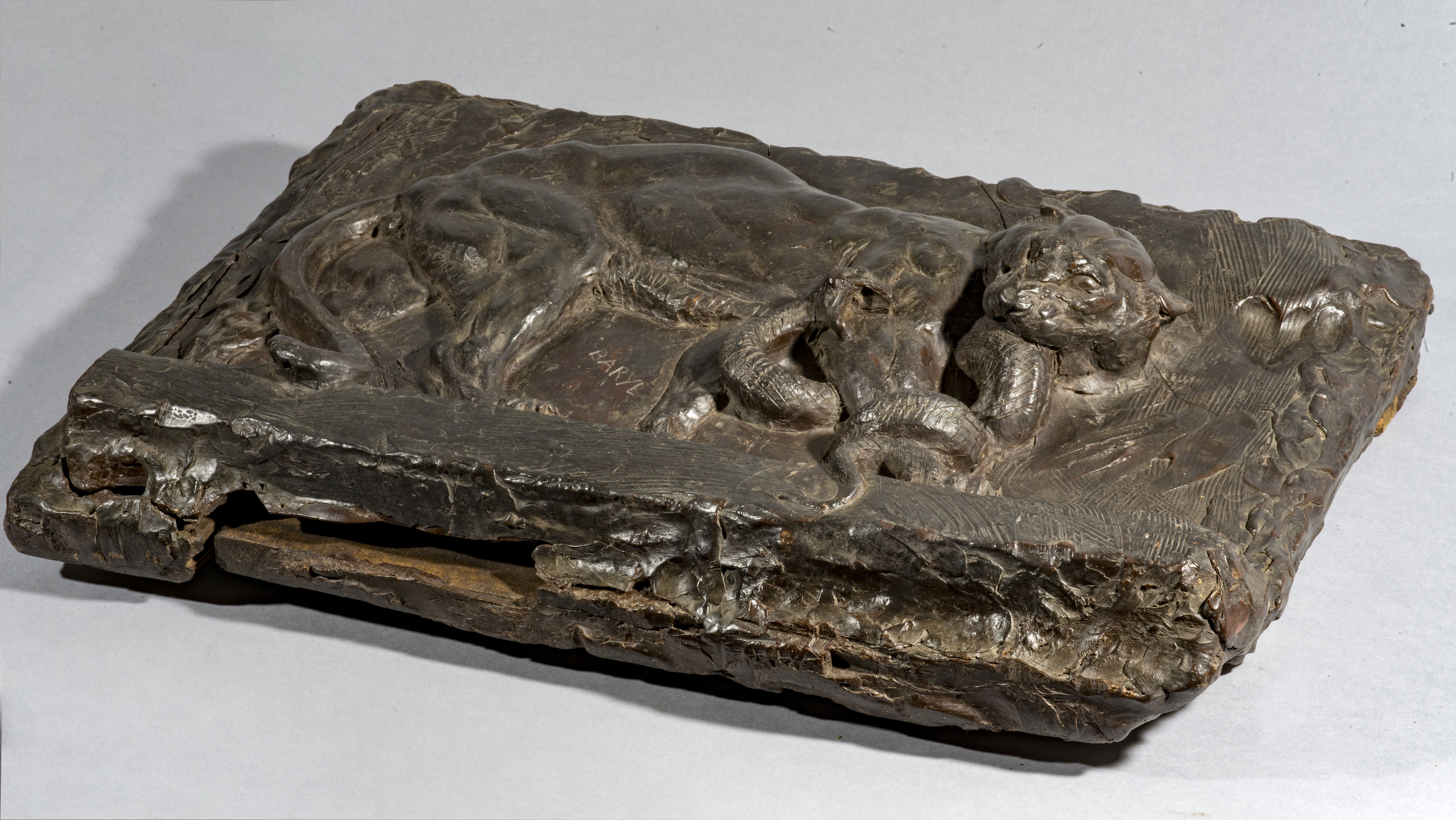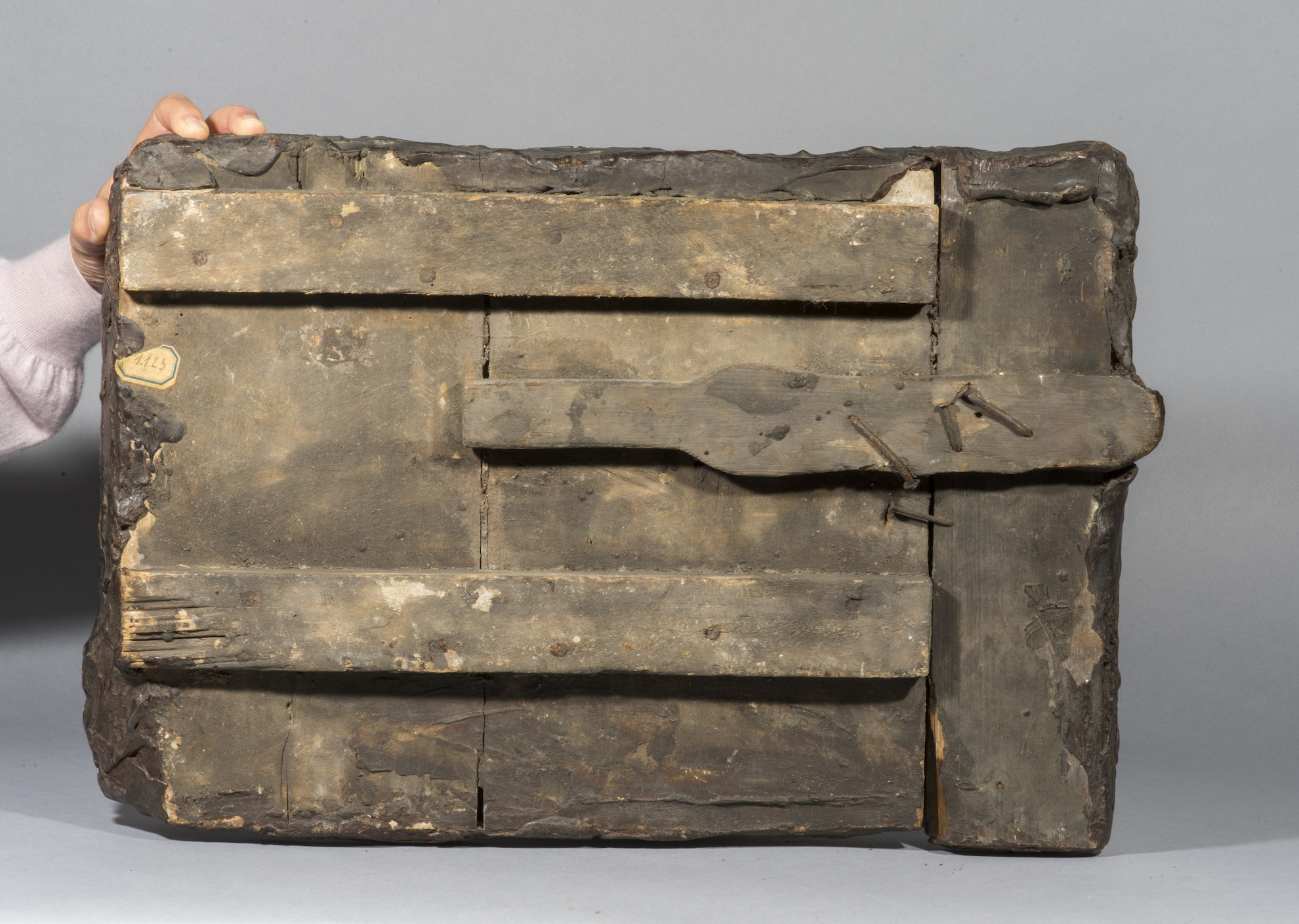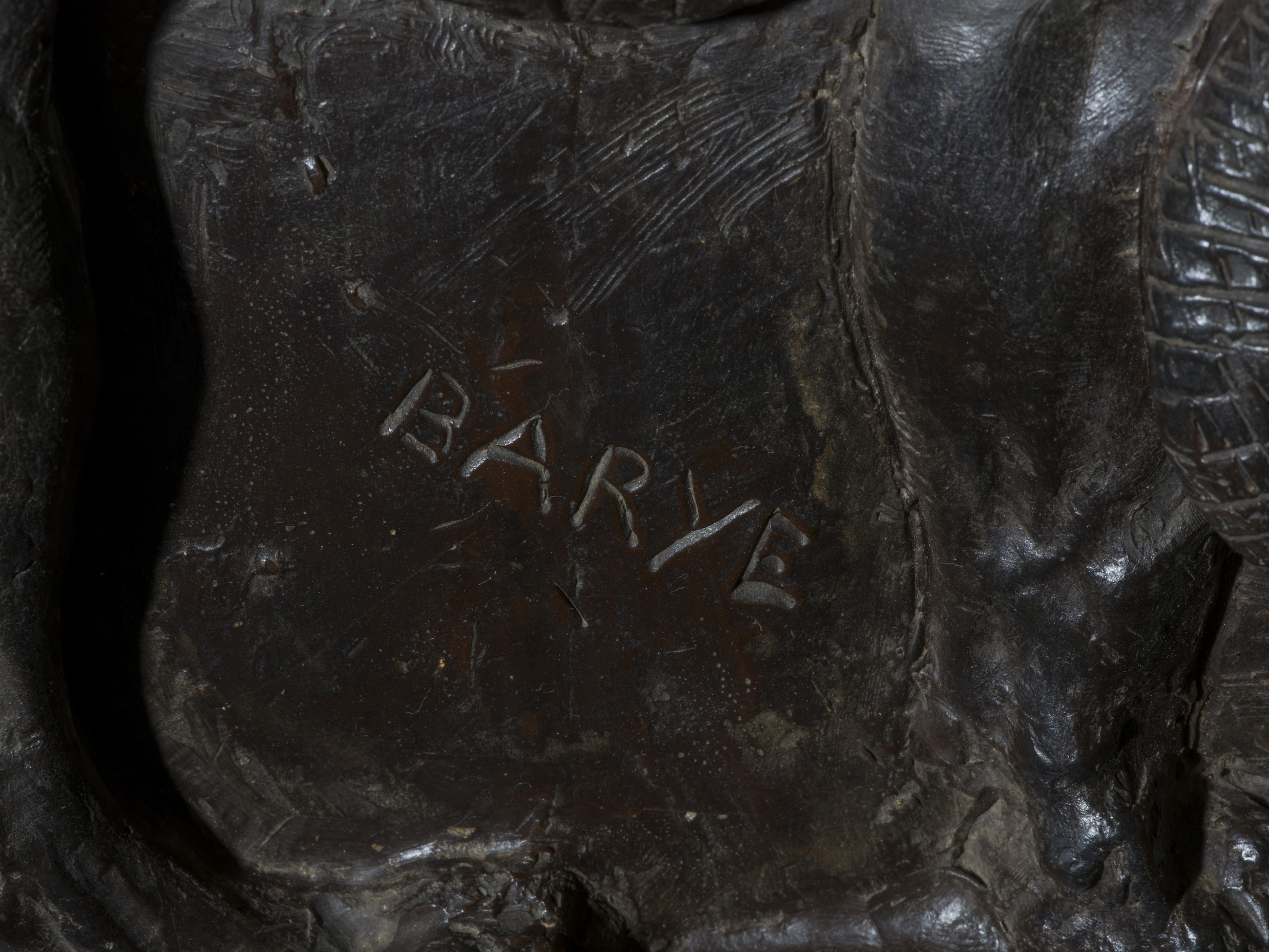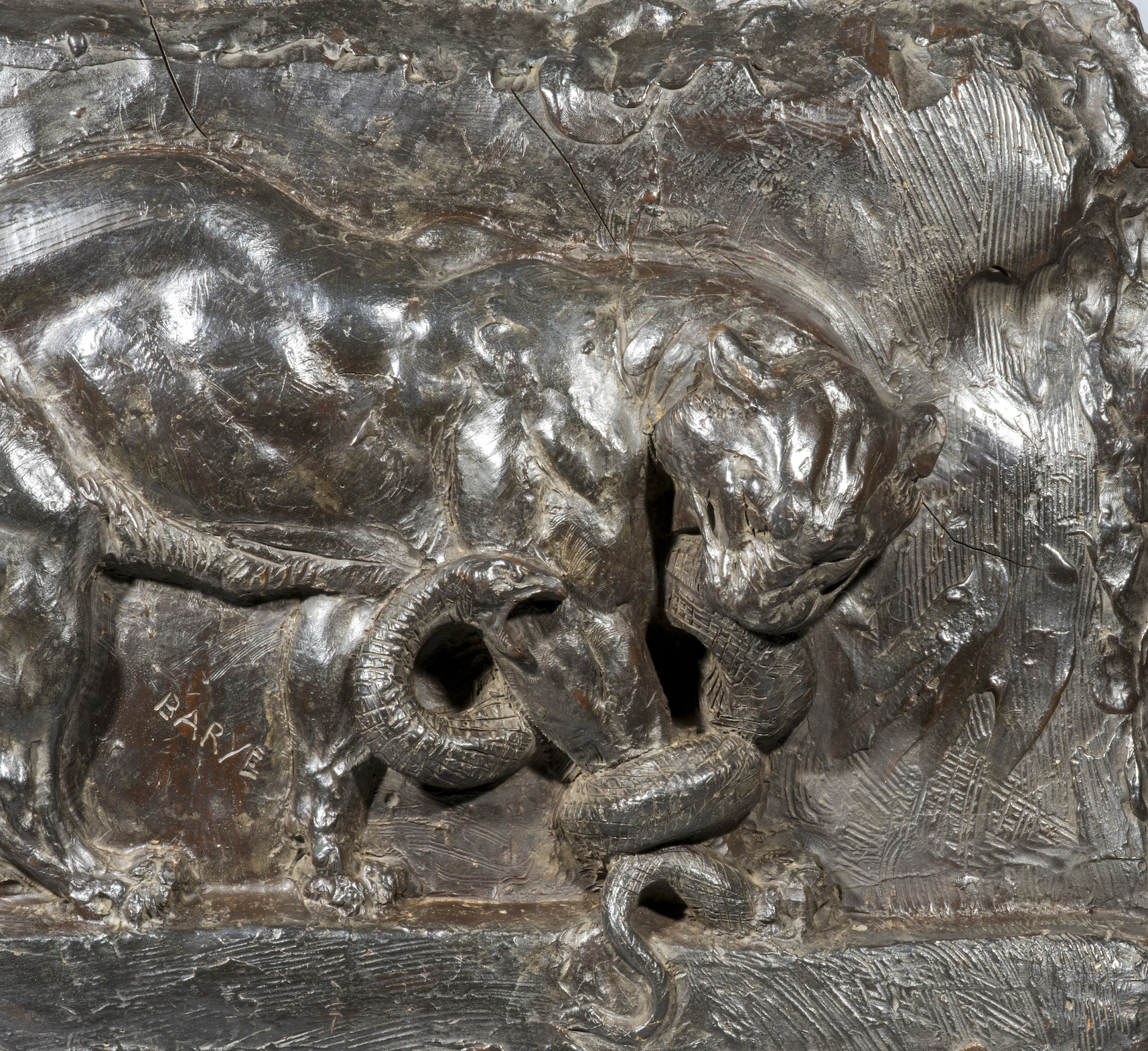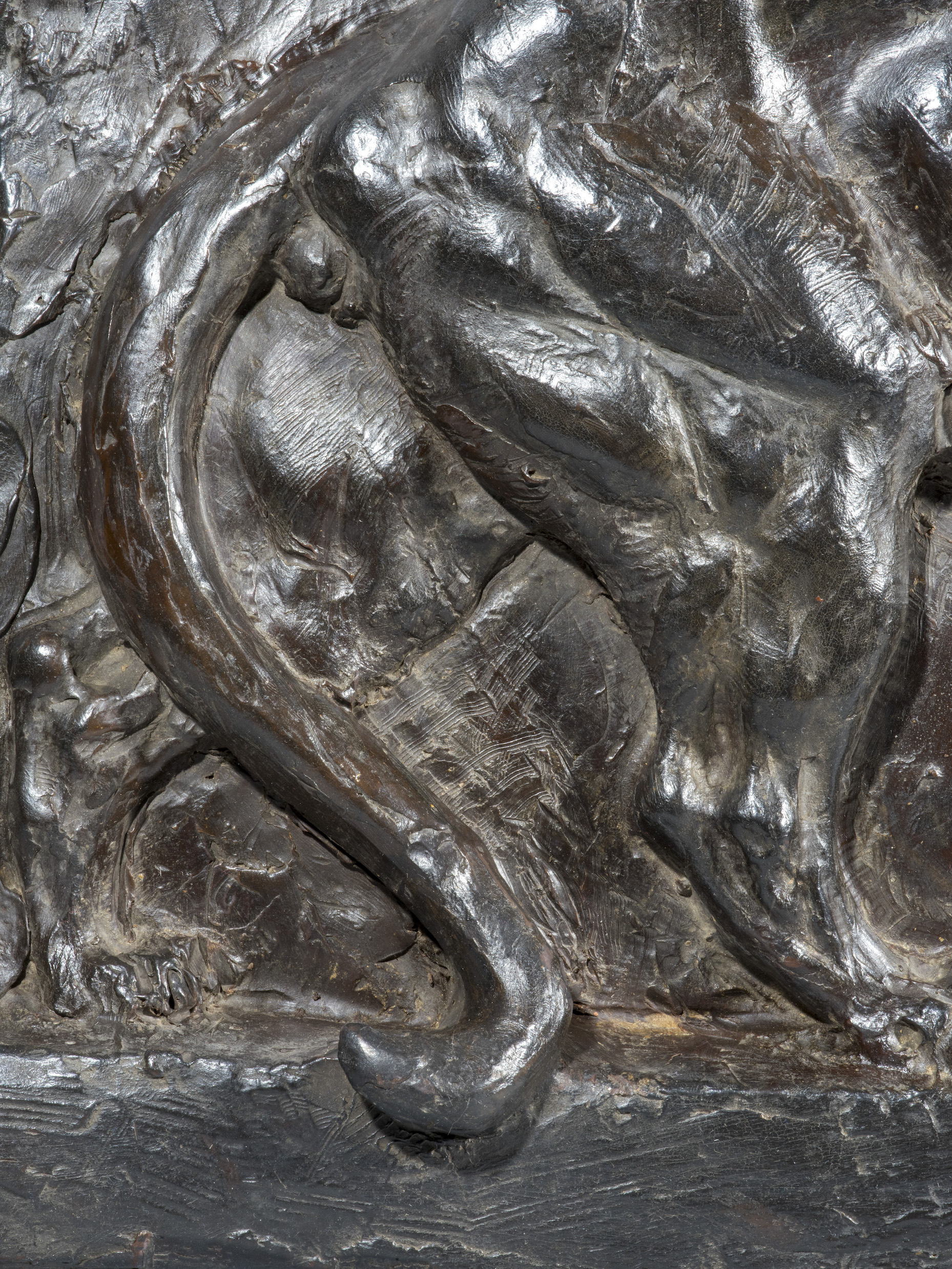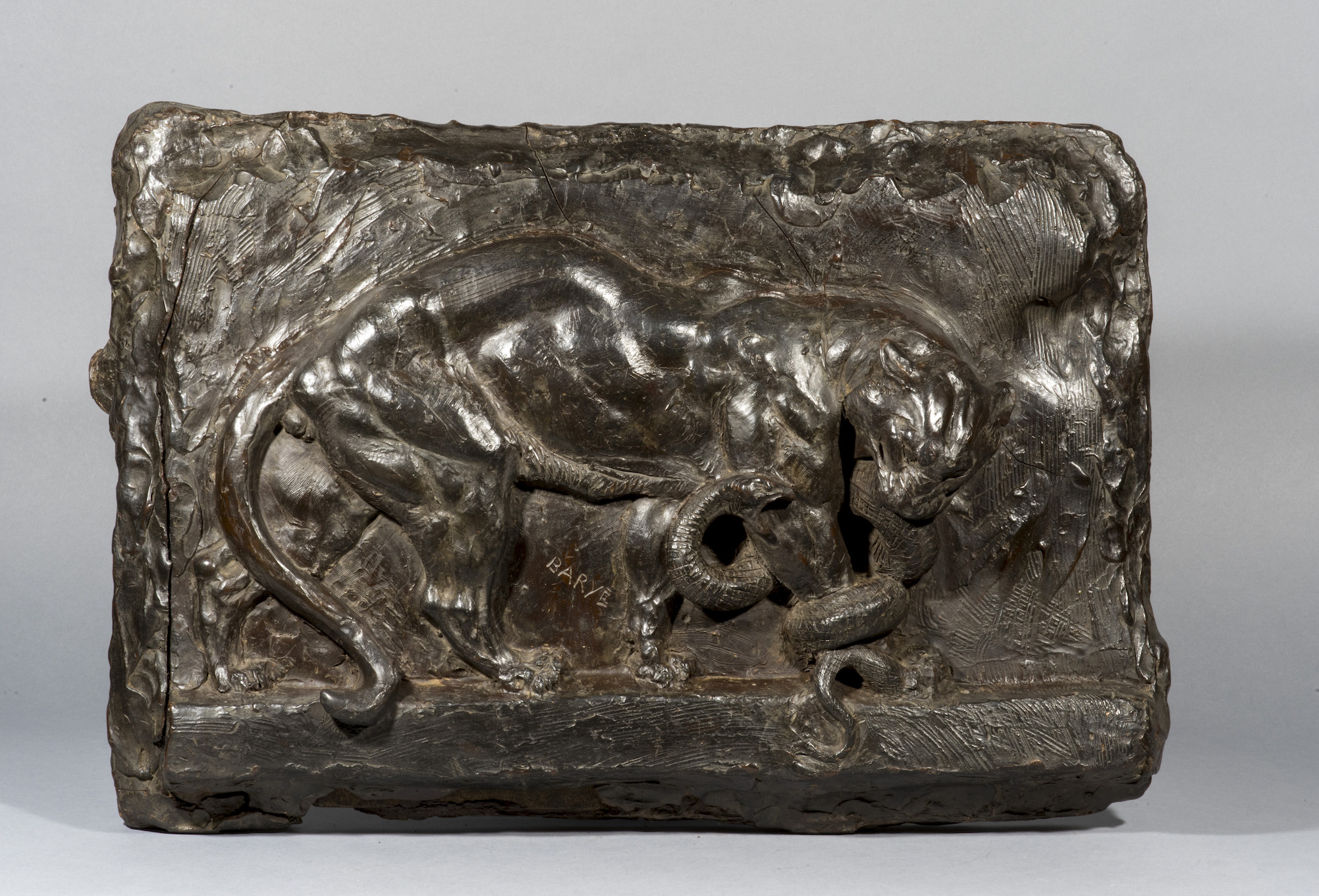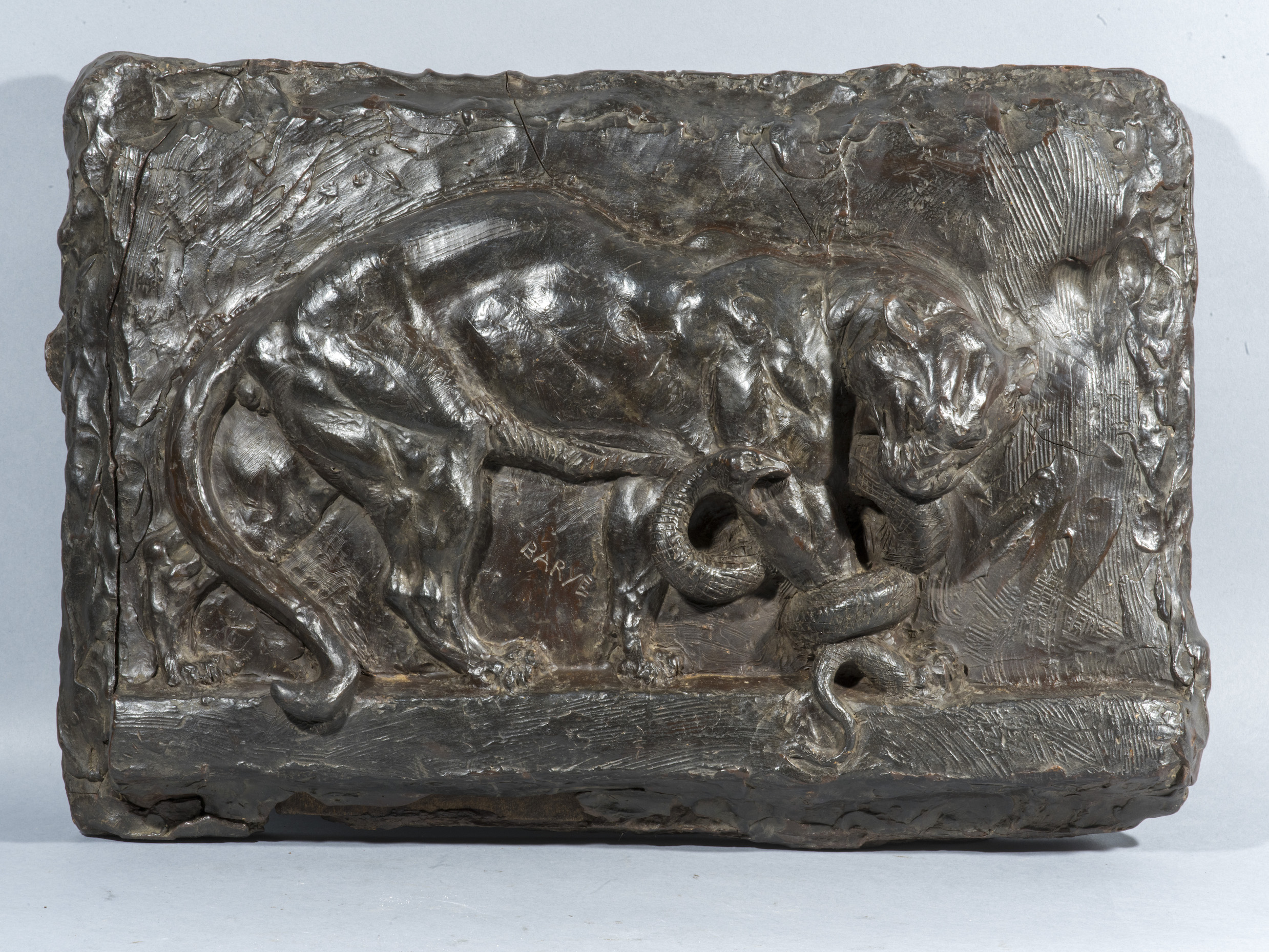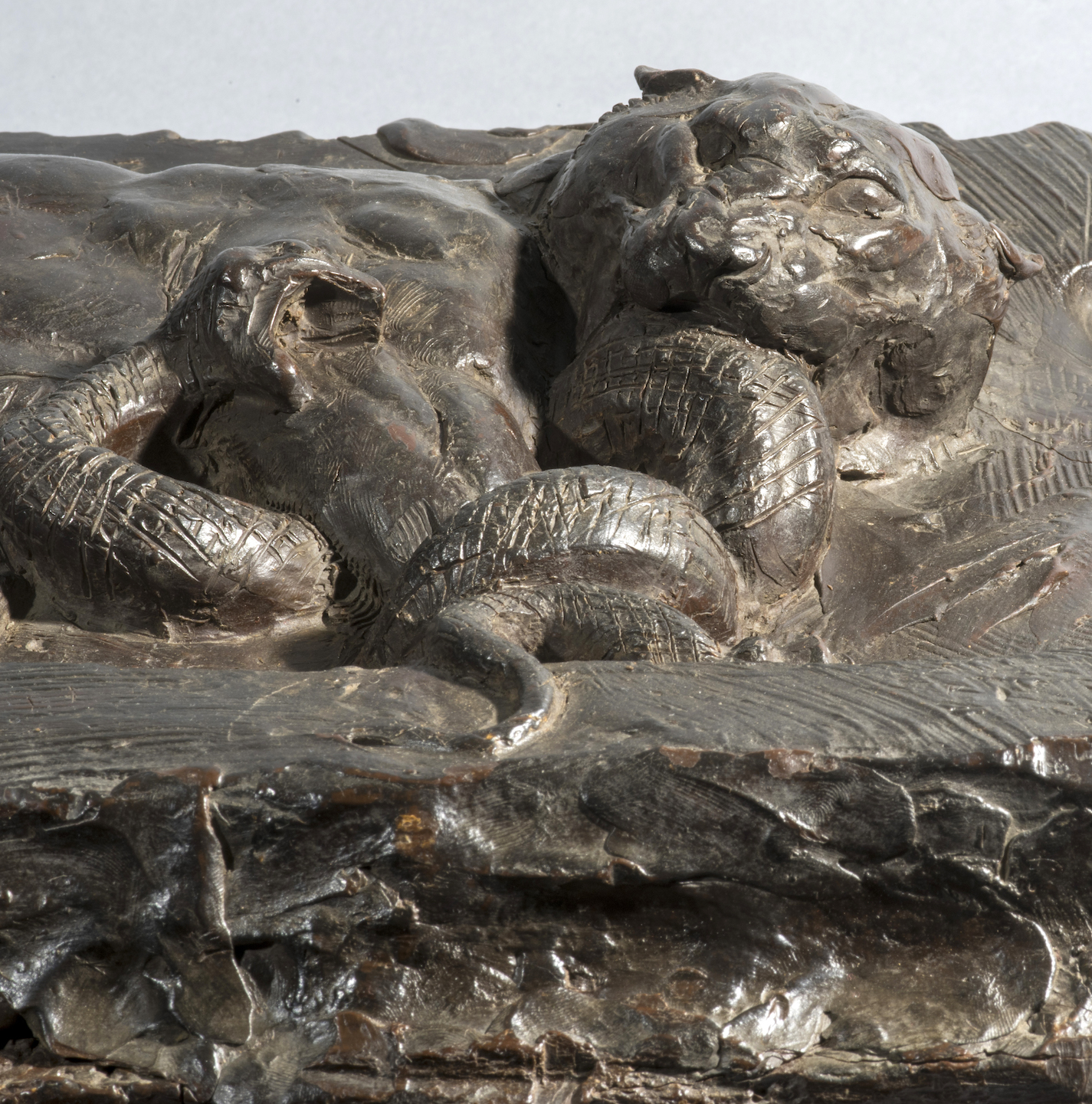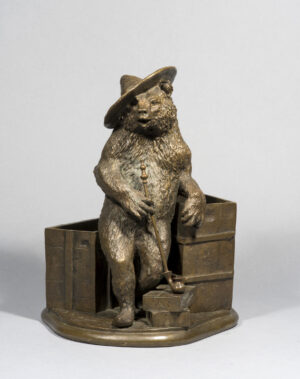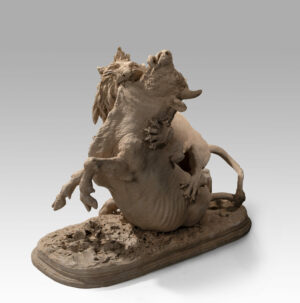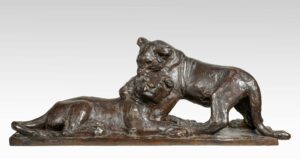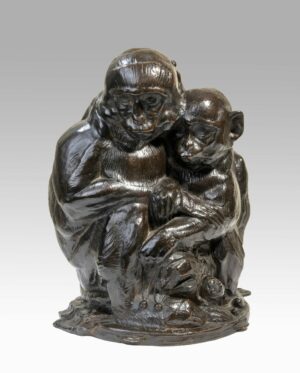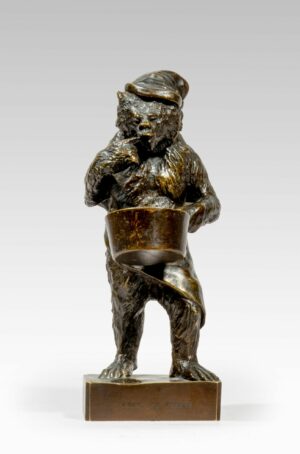Description
Son and pupil of Antoine-Louis Barye, Alfred Barye made his debut at the 1864 Salon with a bronze statuette, Walter Scott, cheval de selle de l’empereur, and exhibited for the last time in 1882. Also an animal sculptor, he worked in his father’s studio, producing a large number of racehorses, as well as groups of birds and genre figures, mostly in bronze.
Like his father, he sought out the synthetic, powerful forms of animal bodies, which are perfectly reflected in our wax bas-relief.
Here, Alfred Barye delivers a vivid, anatomically accurate profile of a panther surprising a snake. The feline’s muscular body occupies all the space in the bas-relief, ending in a face-to-face confrontation focused on the jaw of the furious animal devouring its prey. Like a spring, the snake has wrapped itself around the front leg of the panther,its mouth gaping open. The power of the scene is conveyed by the nervous surface of the wax, sometimes incised with lines as if visually to mark the violence of the combat.
This exceptional wax, created by a unique artist, is also a son’s tribute to his father. The fierce battle is reminiscent of the roaring heads of Tigre dévorant un gavial (1831) and Lion au Serpent n° 1 (1838) by Antoine-Louis Barye (1795-1875). It was this same romantic ardor that inspired Alfred Barye in the present composition.

